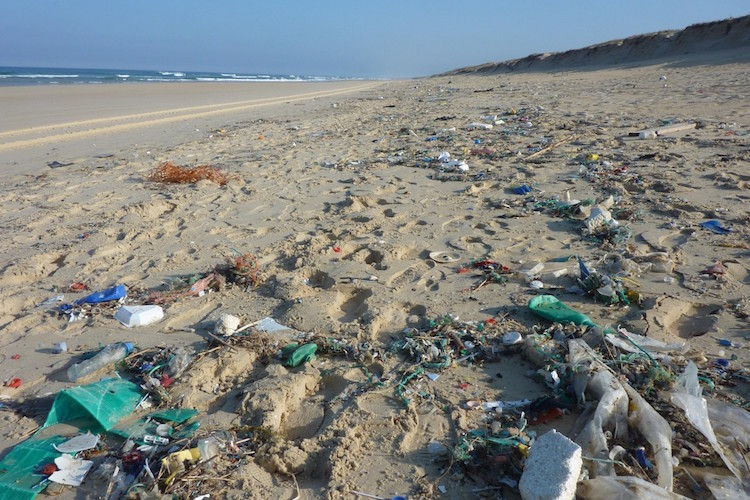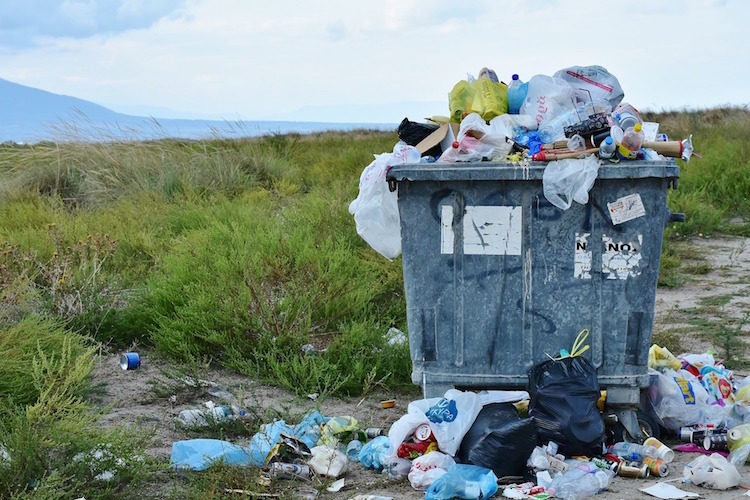We need more hemp bioplastics, so what will it take to get there?
It’s hard to write about hemp bioplastics without first addressing our global plastic problem. So without further ado, a 2017 study published in Science Advances states that since we began mass-producing plastics in the 1950s, we’ve created over 8.3 billion metric tons of plastic. Of these 8.3 billion metric tons of plastic, only 9 percent has been recycled while 79 percent has ended up in our landfills and natural environment. If we don’t address this problem, by 2050 there will be over 12 billion metric tons of plastic polluting our landfills and natural environment.
So what are some possible solutions? Mitigating our dependence on plastics is a must, but changing consumer behavior takes time – so what can we do right now? According to a 2009 study published in Philosophical Transactions B, 50 percent of the plastic we create is for disposable products such as packaging. With that in mind, transitioning to regenerative plant-based bioplastics for disposable products is something we can do right now.

Due to high federal subsidies, corn is the primary feedstock for bioplastics in the United States. This is problematic because corn is neither sustainable nor regenerative. (The term “regenerative agriculture” was coined by the Rodale Institute and is defined as “working with nature to utilize photosynthesis and healthy soil microbiology to draw down greenhouse gases.”)
Enter industrial hemp. Growing one acre of hemp requires a roughly a third of the water required to grow one acre of corn and none of the pesticides. Hemp also presents a superior carbon sequestration potential as one metric ton of hemp sequesters 1.5 metric tons of carbon – that’s about four times more carbon than corn sequesters throughout its production cycle. Furthermore, hemp does all this while remediating the soil, so it’s an ideal rotational crop. In other words, hemp is both sustainable and regenerative.
The Benefits of Hemp Bioplastics
So what about hemp bioplastics? As noted in a previous article published in HEMP, hemp plastic is a solution that currently “seems far from a silver bullet.” But innovation takes time and dedication, so what needs to happen in order for hemp to become a more viable feedstock for bioplastics?
Most hemp bioplastics on the market today are fiber-reinforced biocomposites. These are composite materials made from a polymer matrix reinforced with natural fibers —in our case, hemp fibers. To make a hemp biocomposite, microtized hemp hurd is infused with an existing bioplastic. Currently, most hemp biocomposites contain 10 percent to 30 percent hemp and have limited use cases due to their rigid and durable nature.
How Hemp Bioplastics Can Improve
To expand the use cases of hemp bioplastics, we need to move beyond using hemp simply as a filler in fiber-reinforced biocomposites. We need to move towards extracting cellulose from hemp fiber so we can make other types of bioplastics. The primary challenge is developing cost-effective methods of extracting hemp cellulose. This is not an inherently difficult task, but it will require considerable research and development – and once achieved, we will finally be able to produce 100% hemp bioplastics.
From an agricultural standpoint, the primary challenge is processing the raw hemp hurd. This process requires the use of decorticators, which are currently in short supply in the United States. A decorticator is “a machine that separates hemp’s stringy outer layer, called the baste, from its woody core, known as the hurd.”
From a product development standpoint, the primary challenge is designing products to the specs of previously untested bioplastic formulations. While overcoming this challenge is simply a matter of determining the ideal specs for specific products and tweaking the formulations accordingly, the result is a hefty increase in product development costs.
The Challenges Facing Hemp Bioplastics
From a cost of goods sold standpoint, the primary challenge is the fact that hemp is still illegal under federal law. However, the 2014 Farm Bill reintroduced hemp to our agricultural economy and the 2017 U.S. Hemp Crop Report reveals that 25,000 acres of hemp were grown in 19 states last year. This is a dramatic increase from the 9,770 acres of hemp grown in 15 states in 2016. As the industry continues to grow, the price of hemp will drop and hemp bioplastics will become more price competitive with other bioplastics.
From a biodegradability standpoint, the primary challenge is the lack of widespread industrial composting facilities in the United States and the limited capabilities of existing facilities – many of which are unable to compost even common bioplastics. Compared to European composting standards, we’re living in the Stone Age. But the point is that while hemp bioplastics are biodegradable, they aren’t necessarily compostable. However, as the market for bioplastics continues to grow, so will the demand for better composting facilities.
From a biodegradability standpoint, the primary challenge is the lack of widespread industrial composting facilities in the United States and the limited capabilities of existing facilities – many of which are unable to compost even common bioplastics.
In the meantime, remember that 79 percent of plastics end up in our landfills and natural environment. Regardless of their compostability, plant-based bioplastics break down much faster than petroleum-based plastics, where bulkier items like plastic bottles take over 400 years to break down.
Several things are abundantly clear. First, as the global demand for plastics continues to increase, we need to transition away from petroleum-based plastics. This is especially true for disposable products, like packaging, which account for 50 percent of our plastic consumption. Second, we need to ensure that this transition doesn’t solve one problem by contributing to another problem – the health of our agricultural land. Monocropping and the overproduction of corn are already wreaking havoc on our agricultural economy.
We need to take our transition to plant-based bioplastics a step further: we need to transition to regenerative plant-based bioplastics. And while hemp may be a ways from becoming the bioplastics feedstock we need, it’s absolutely the right plant for the job.
James Eichner is a Co-Founder at Sana Packaging. He earned his B.A. at Colorado College and his M.B.A. at the University of Colorado Boulder. James is passionate about the outdoors and protecting our natural environment. Sana Packaging makes differentiated, sustainable, and compliant packaging solutions for the cannabis industry using 100% plant-based hemp plastic.


